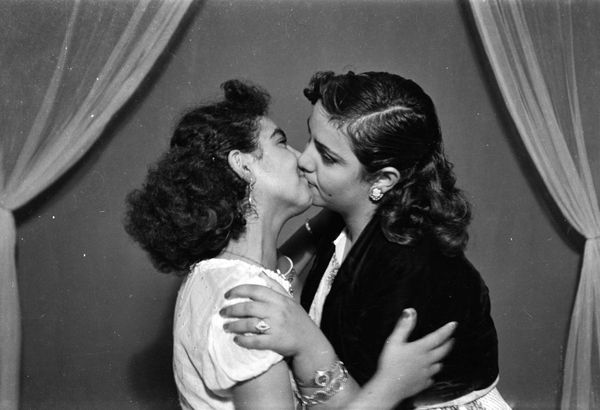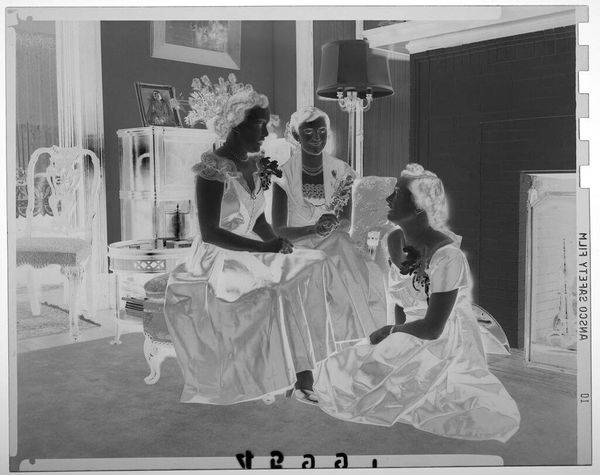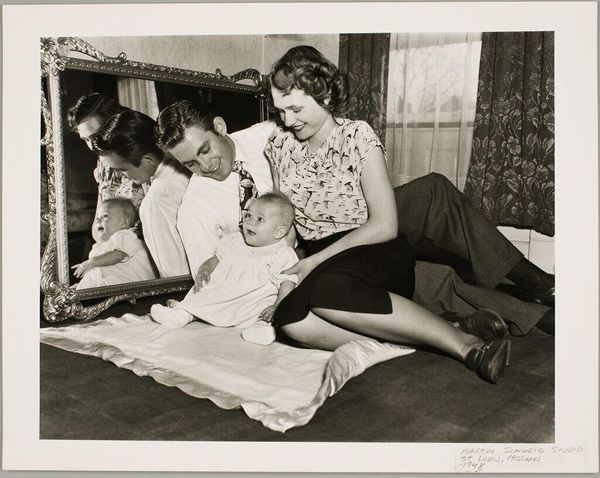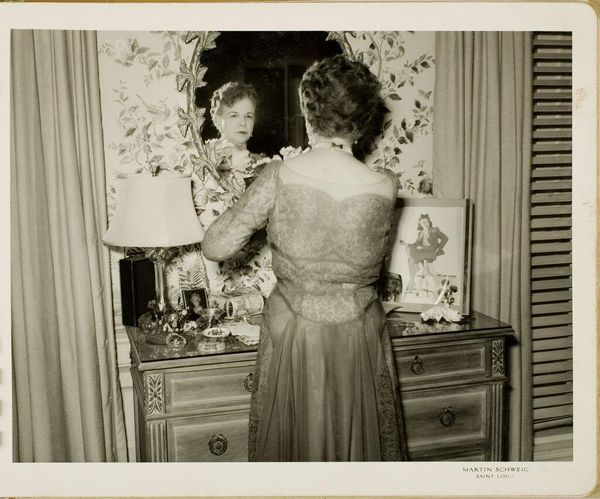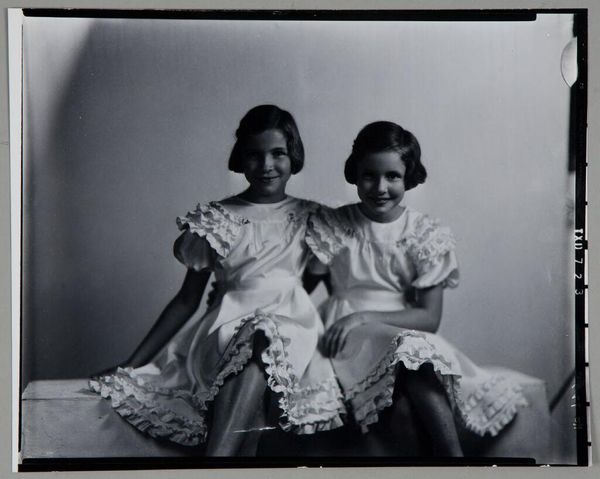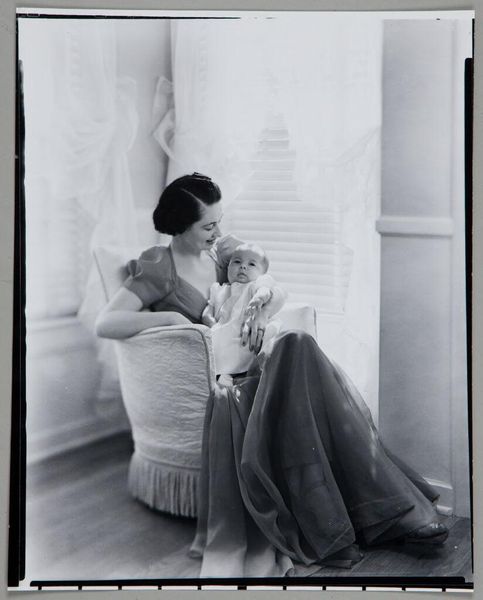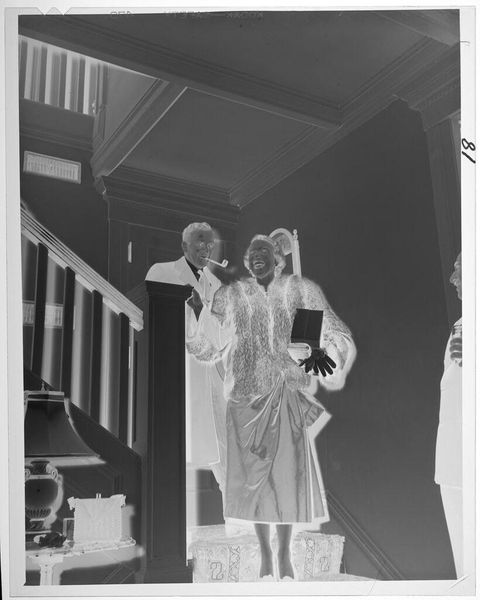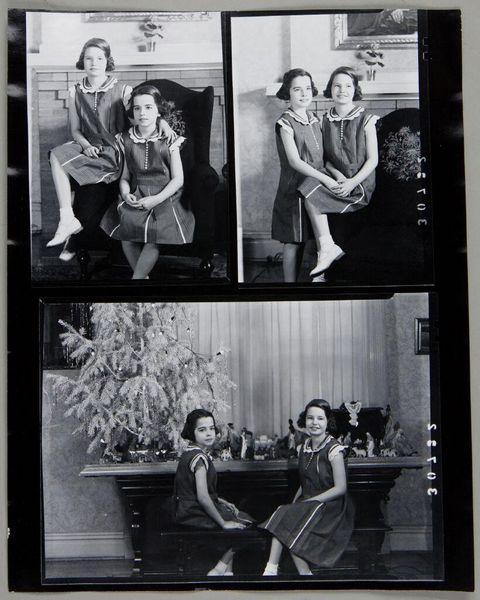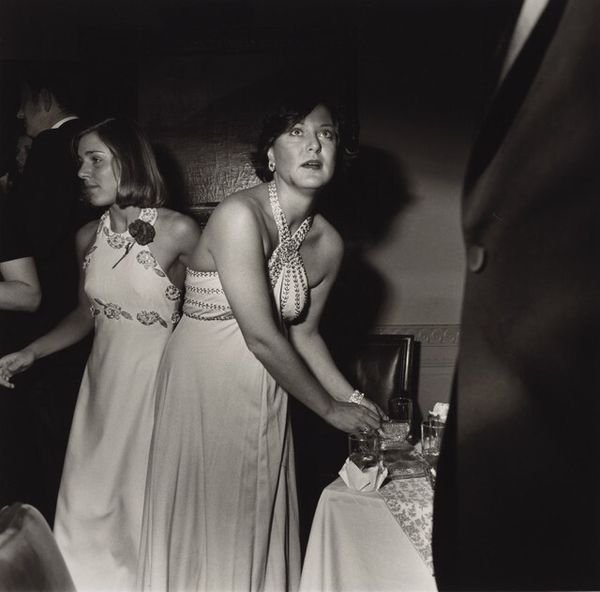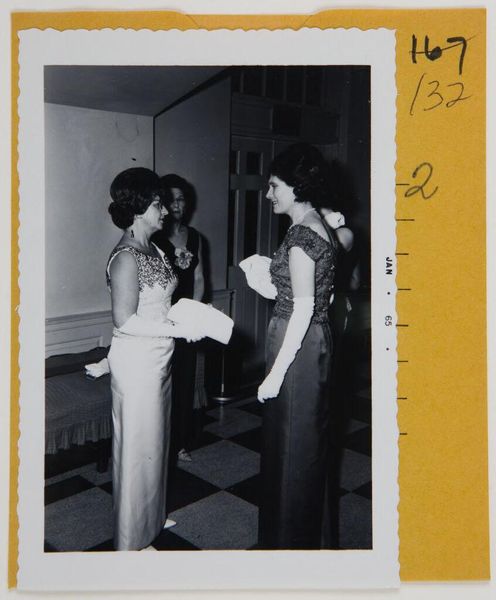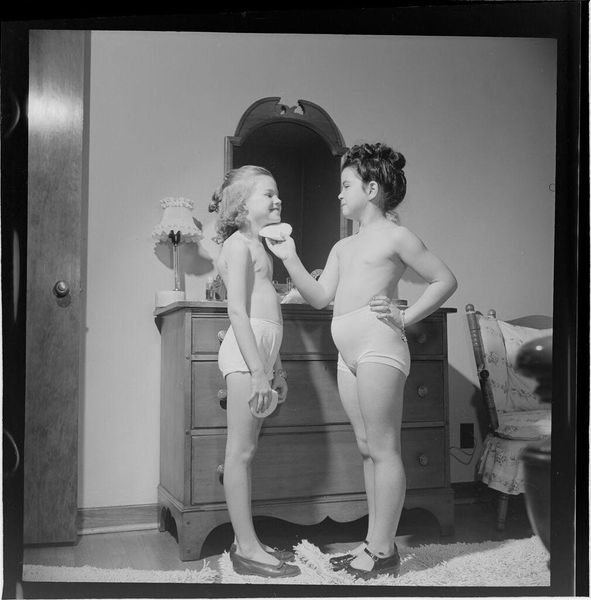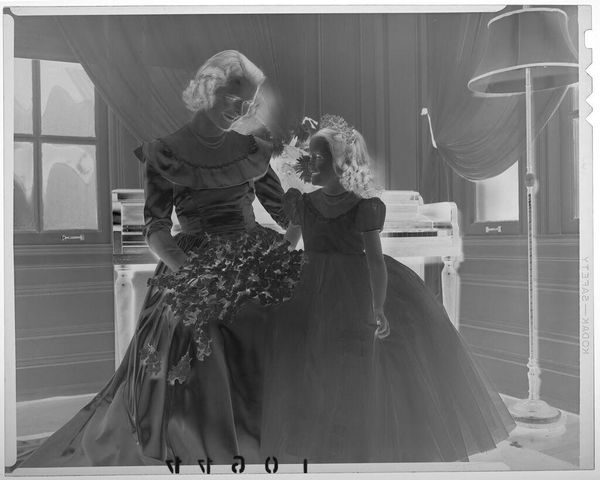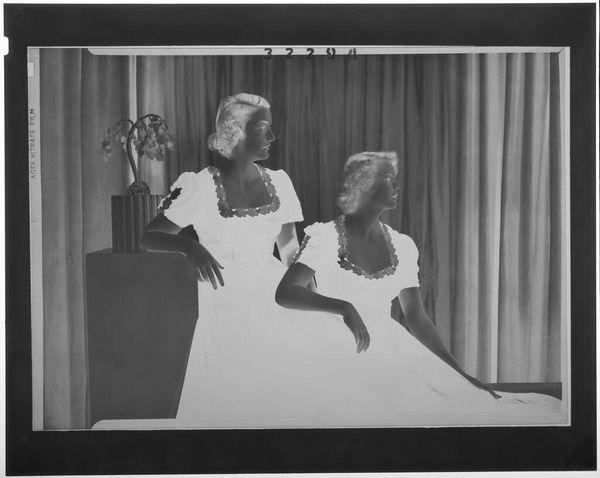
Anonymous. Studio Shehrazade, Saida, Lebanon, early 1970s. Hashem el Madani 2007
0:00
0:00
Dimensions: image: 290 x 292 mm
Copyright: © Akram Zaatari, courtesy Hashem el Madani and Arab Image Foundation, Beirut | CC-BY-NC-ND 4.0 DEED, Photo: Tate
Curator: This photograph, taken in the early 1970s at Studio Shehrazade in Saida, Lebanon, is attributed to Hashem el Madani, though now it's part of Akram Zaatari's collection. What strikes you? Editor: The stark black and white palette gives it an immediacy, almost raw—yet the composition, with the curtain framing the subjects, feels deliberately staged. Curator: The handshake, the kiss on the cheek, the clothes. To me, these are performative gestures, negotiating identity and relationship within a particular social framework. Editor: The symmetry of the drapery offset by the asymmetry of the figures creates a visual tension, reflecting the ambiguity of the subjects' relationship. Curator: There's a fragility here, a sense of fleeting moments captured. These staged images have become icons. Editor: Yes, the formal elements almost belie the vulnerability of the subjects. Curator: It is a window into another time, a record, and a symbol. Editor: The careful arrangement of light and form adds layers of meaning we continue to unpack.
Comments
tate 6 months ago
⋮
http://www.tate.org.uk/art/artworks/zaatari-anonymous-studio-shehrazade-saida-lebanon-early-1970s-hashem-el-madani-p79491
Join the conversation
Join millions of artists and users on Artera today and experience the ultimate creative platform.
tate 6 months ago
⋮
This work is one of a series of black and white silver gelatin photographs of varying sizes that are collectively titled Objects of study/The archive of studio Shehrazade/Hashem el Madani/Studio Practices. All of the photographs were taken by the Lebanese commercial photographer Hashem el Madani between 1948 and 1982 and compiled into the present group, 117 of which are in Tate’s collection, by the Lebanese artist Akram Zaatari. All of the photographs include people, either alone, in pairs or in small groups, and most were taken in Madani’s studio, although some were shot outside and in his subjects’ homes. The series features men and women and covers a wide age range from babies to elderly people. Almost all of the sitters assume poses deliberately for the camera, sometimes accompanied by props or costumes, and most gaze directly towards the lens. Many of the pictures show subjects interacting in various ways, including embracing, kissing and acting out scenes, such as a mock wrestling match. The photographs are mostly tightly cropped, with the sitter or sitters filling most of the frame, although in some cases the figures are positioned further away from the camera, for instance when shown sitting at a table or standing behind a chair. The photographs tend to have sparse backgrounds, often dominated by a blank posterior wall. They are mounted on white paper, displayed in plain white frames and signed on the back by Madani. Many of them have been organised into categories by Zaatari – such as a group featuring men dressed as Syrian resistance fighters and a collection depicting newly married couples – while the rest are presented individually. Zaatari has stated that although he prefers these groups to be displayed together, this is not a requirement (Akram Zaatari, email to Rachel Taylor, 24 April 2008, Tate Acquisition file).
